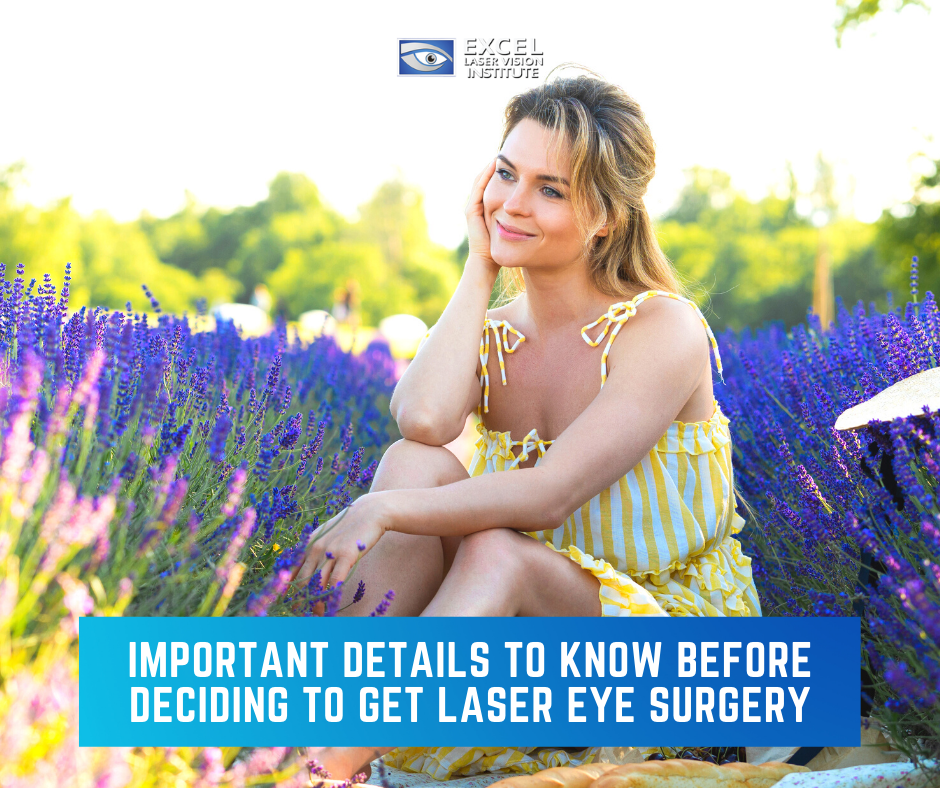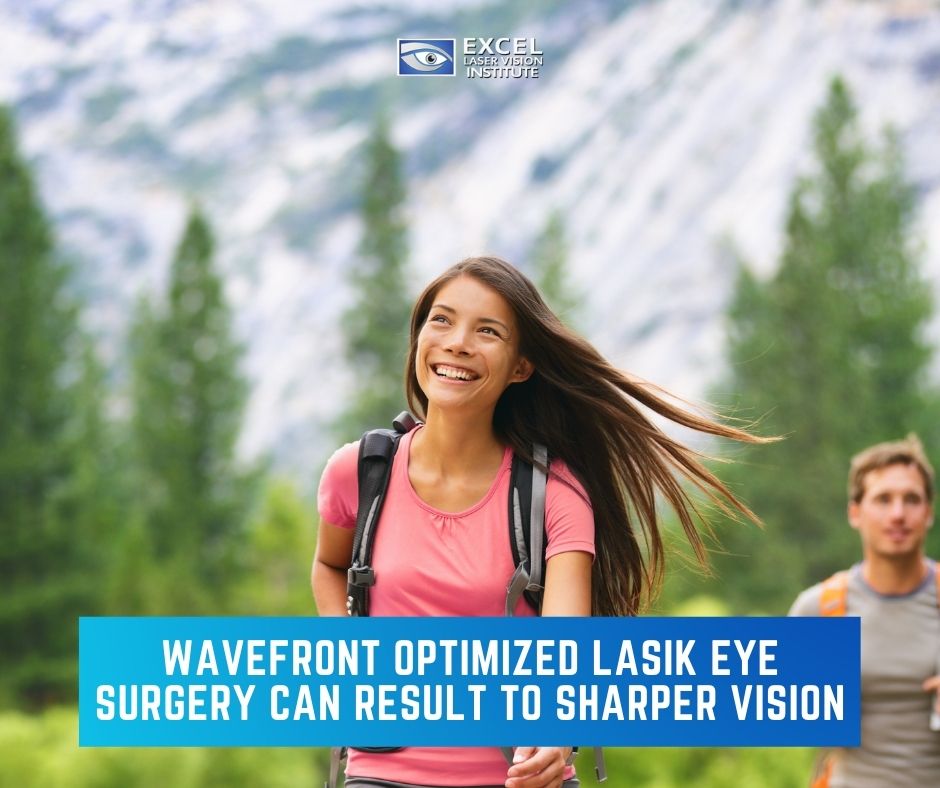
The Do’s and Don’t’s: Some Important LASIK Eye Surgery Aftercare Tips
LASIK is an FDA-approved surgical procedure that aims to correct eye conditions like nearsightedness, farsightedness, and astigmatism using laser. Like all types of medical procedures, a patient who will undergo LASIK eye surgery will not only be given pre-operative instructions, but also postoperative ones to ensure the success of the procedure.
Los Angeles Cataract Surgery: Does the Procedure Have an Age Limit?
Cataracts are a leading cause of blindness in elderly people. Studies reveal that around half of people aged 75 to 85 have experienced vision loss due to cataracts. Though the severity of the problem may vary from one individual to another, the end game is still the same. Over time, cataracts will break down the eye’s lens and cause a partial, and eventually, a complete loss of vision.
Understand Well and See Clearly: Answers to FAQs on LASIK Eye Surgery
Clear vision is something that individuals who have been wearing prescription eyeglasses for a long time appreciate very much. Without eyeglasses, people with eye refractive errors (i.e. nearsighted, farsighted, etc.) would easily find themselves having a hard time reading from a distance and distinguishing objects around them, resulting in headaches and frustration.
Orange County Laser Eye Surgery: Can It Improve Your Night Vision?
Do you find it challenging to see clearly at night or in dimly lit rooms? Does this hamper your ability to drive a car safely in the evening, among other regular nighttime tasks? You might be suffering from a condition that affects your night vision. Such issues can severely limit your ability to perform certain activities when the sun goes down.
Orange County LASIK Surgery: Will You Need to Have a Second Procedure?
According to the Food and Drug Administration (FDA), the average number of LASIK procedures performed in the U.S. amounts to more or less 600,000 per year. This type of eye surgery is used to correct a variety of vision problems including nearsightedness, farsightedness, and astigmatism. It is a pricey procedure for most people, and thus it’s only natural to want to know if the results are permanent and lifelong.
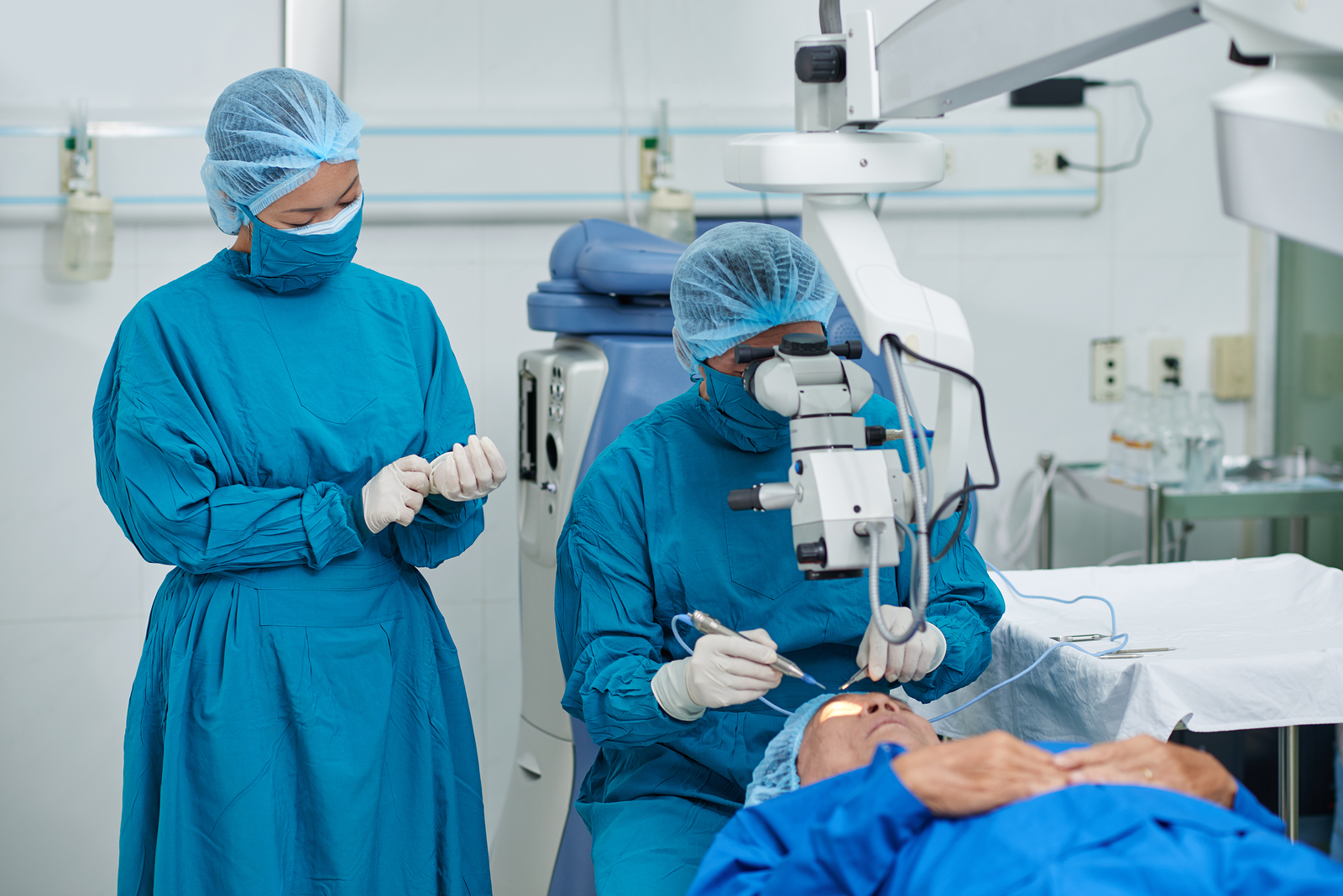
Important Facts on Cataracts and Knowing When to Get Cataract Surgery
According to a projected study, as much as 45.6 million Americans would be suffering from cataracts by 2050. As it is, the numbers are already halfway there with as much as 25.7 million Americans aged over 40 currently suffering from this condition. (more…)
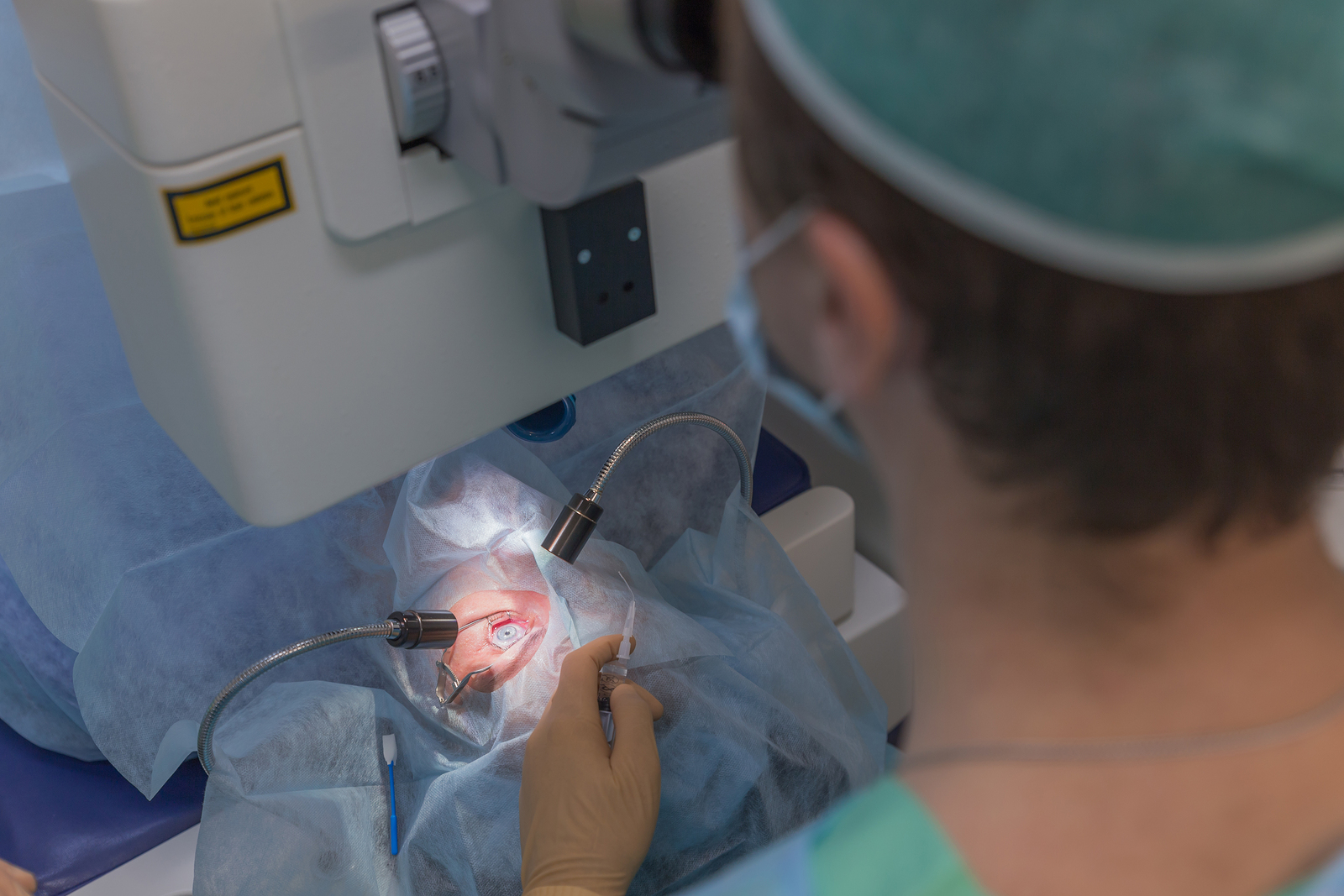
Tips on How to Determine If Getting a LASIK Eye Surgery is for You
Do you often feel a headache coming on lately? Does it feel like you’re a bit more sensitive to light nowadays? Has your vision gone blurry—or blurrier than usual? If you are undergoing any of these symptoms, it may point to an eye problem. (more…)
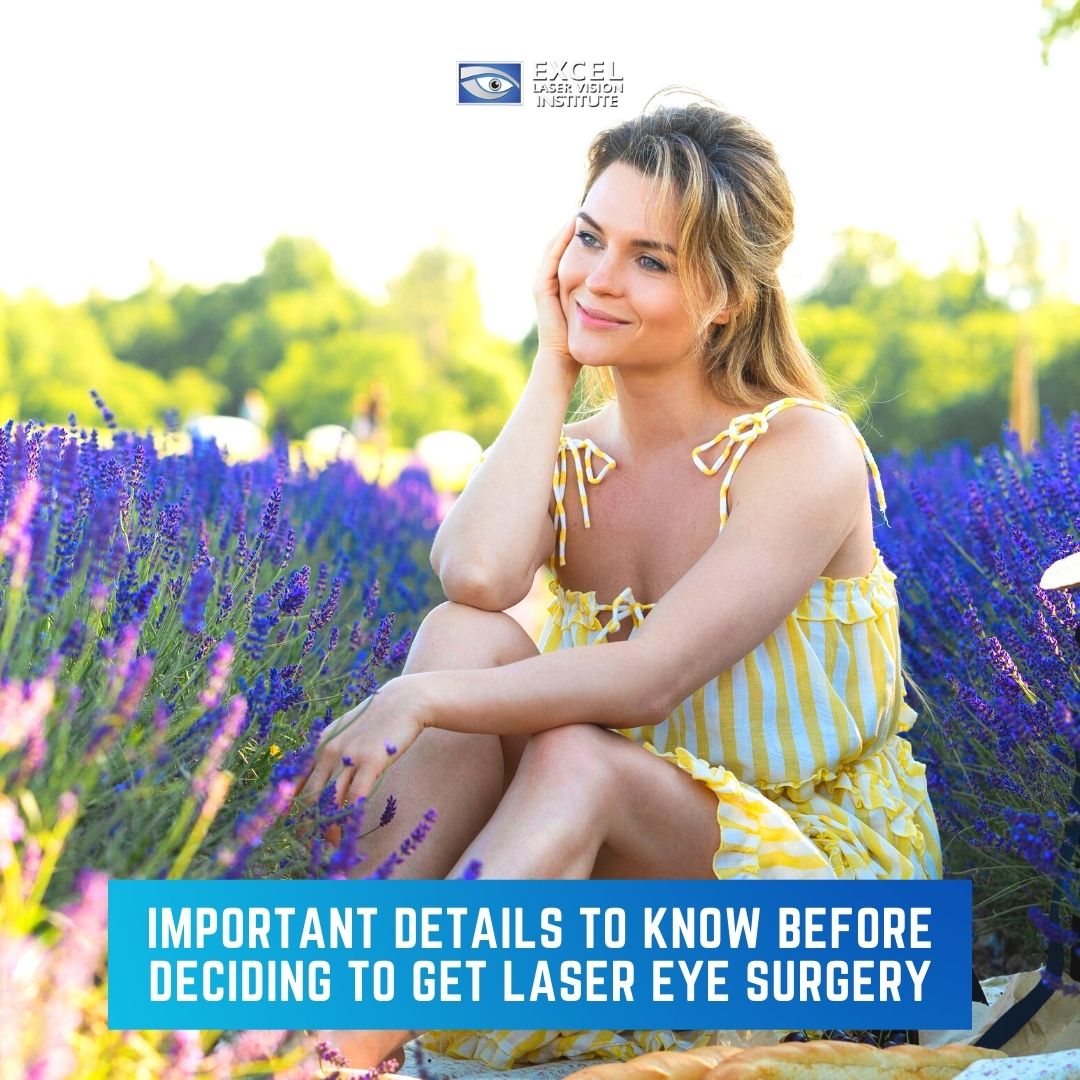
Important Details to Know Before Deciding to Get Laser Eye Surgery
Our bodies become more susceptible to wear and tear as we get older – our joints become frailer, memory isn’t as sharp, and vision becomes blurry. For these issues, there are various solutions to focus on them. One of the more pioneering procedures to ever appear in the last few decades is laser eye surgery.
Empty heading
What is a Laser Eye Procedure?
Many people ask about laser eye surgery costs because it is a very sought-after procedure since it is quick, safe, and painless. During a LASIK procedure, the LASIK surgeon creates a flap of tissue over the cornea and peels it back to have access to the cornea. Afterward, the laser will beam right into the eye to reshape the cornea, which is how the vision improves.
The whole procedure doesn’t take more than a minute. Once it is completed, the patient is given eye drops to ensure that their eyes don’t go dry.
Typically, LASIK surgery patients recover within 24 to 48 hours. This all depends on a person’s healing capabilities, but you can have peace of mind that you won’t have to wait a long time until you can see the world clearly again.
Who Should Get LASIK Surgery?
People who are sick and tired of wearing eyeglasses or contact lenses may want to go through LASIK surgery. This is a type of refractive eye surgery.
For the most part, many people who get laser-assisted in situ keratomileusis (LASIK) eye surgery attain 20/20 vision or better, which is sufficient for most activities. However, most people will still require glasses for driving at night or reading as they age.
LASIK has an excellent performance record. If there are ever complications that result in a loss of vision, they are rare, and many people are happy with their results. Specific side effects, especially dry eyes and temporary visual disturbances (such as glare), are fairly common. However, these usually clear up after a couple of weeks or months, and a minority of people think of them as long-term issues.
A person’s results rely on their refractive error and other factors. Those with mild nearsightedness usually have the most success with refractive surgery. Individuals with a high level of nearsightedness, farsightedness, and astigmatism have less predictable results.
Keep on reading about what to think about as you decide whether this surgery is suitable for you.
What Happens During LASIK?
There are quite a few variations of laser refractive surgery. LASIK is the most sought-after and most commonly performed eye surgery. Most of the time, the term “LASIK” is used to indicate all types of laser eye surgery.
Normally, images are focused on the retina that’s in the back of the eye. When it comes to nearsightedness, farsightedness, or astigmatism, they finish up being focused either in front of or behind the retina, ending in blurred vision.
- Nearsightedness (myopia) is a condition that lets you see objects nearby clearly, but objects that are far away appear blurry. When your eyeball is a little bit longer than normal or when the cornea curves too sharply, light rays focus in front of the retina and blur distant vision. A person can see objects that are close more clearly, but not those that are far away.
- Farsightedness (hyperopia) is a condition that lets you see objects far away clearly, but nearby objects are blurry. When you have a shorter than average eyeball or a cornea that is too flat, light focuses behind the retina rather than on it. This blurs near vision and occasionally distant vision.
- Astigmatism results in overall blurry vision. When the cornea curves or flattens unevenly, the outcome is astigmatism, which interrupts the focus of near and distant vision.
Normally, blurry vision is corrected by bending (refracting) light rays with glasses or contact lenses. Nevertheless, reshaping the cornea (the dome-shaped transparent tissue at the front of your eye) itself can provide the necessary refraction and vision correction
Prior to a LASIK procedure, your LASIK eye surgeon will determine the detailed measurements of your eye and assess the eye’s overall health. Your eye surgeon may ask you to take a mild sedative medication just before the procedure.
Eye-numbing drops will be administered once you are lying comfortably on an operating table. Then he or she will use a unique type of cutting laser to alter the curvature of your cornea accurately.
Whenever the laser beam sends a pulse, a very small amount of corneal tissue is taken off, allowing your eye surgeon to flatten the curve of your cornea or make it steeper.
Typically, an eye surgeon creates a flap in the cornea and then lifts it before reshaping it. Also, there are variations that involve a thin flap to be raised or no flap is used at all. Nonetheless, each technique has its pros and cons.
What are the Kinds of Laser Eye Procedures?
Every LASIK eye surgeon may specialize in specific types of laser eye procedures. Their differences are usually small, and none are clearly better than any others. Depending on your individual situation and preferences, you may consider:
- 1. Laser-Assisted in Situ Keratomileusis (LASIK): It’s the most commonly performed eye laser surgery, LASIK involves making a partial-thickness corneal flap and utilizing an excimer laser to ablate the bed of the cornea. The flap is then put back into its original position. Discomfort after surgery is very little, and vision recovery usually takes place in 1 to 2 days.
- 2. Photorefractive Keratectomy (PRK): With PRK, instead of creating a flap, the top surface (epithelium) is scraped away. This corneal abrasion takes three or four days to heal, and the outcome is moderate pain and blurred vision in the short term.
It was considered that these disadvantages were canceled out by the theoretical advantage that PRK was safer for those who are more likely to be stuck in the eye — for instance, those involved in law enforcement, military, or contact sports. However, even with standard LASIK, the risk of eyeball rupture is still very low, so there is probably no significant advantage with PRK. Additionally, LASIK is a better option than PRK for correcting more severe nearsightedness (myopia).
3. Laser-Assisted Subepithelial Keratectomy (LASEK): LASEK is no different from LASIK surgery, but the flap is made by using a special cutting device (microkeratome) and exposing the cornea to ethanol. The procedure lets the surgeon remove less of the cornea, making it a good option for those who have thin corneas. LASEK does not have any considerable advantages over LASIK for individuals at greater risk of eye injuries.
4. Epithelial Laser-Assisted in Situ Keratomileusis (epi-LASIK): In an epi-LASIK procedure, your laser eye surgeon separates the epithelium from the middle part of the cornea called the stroma) using a mechanized blunt blade device known as an epikeratome and reshapes the cornea with a laser. This procedure is similar to LASEK.
5. Small-Incision Lenticule Extraction (SMILE): This is a more contemporary type of refractive surgery that allows the eye surgeon to reshape the cornea. To do this, the surgeon uses a laser to make a lens-shaped bit of tissue known as the lenticule which is located below the cornea surface. When the lenticule has been used to reshape the cornea, it is then removed through a very small incision.
6. Intraocular Lenses: A laser eye surgeon can use surgically inserted corrective lenses in the eye, which are also known as intraocular lenses) to enhance vision. It’s normally carried out as part of cataract surgery, which involves removing the old, cloudy natural lens. Additionally, it may be an alternative to LASIK for older adults who may require cataract surgery in the future.
Younger people with high levels of nearsightedness that cannot be properly treated with corrective lenses may be offered intraocular lenses. However, these are not a typical options for most people.
7. Bioptics: Bioptics uses one or more techniques, such as intraocular lenses and LASIK, to treat nearsightedness or farsightedness.
If you want to discover more about LASIK procedures, contact Excel Laser Vision Institute at (310) 905-8622. A member from our dedicated team will be happy to answer all your questions about the type of refractive surgery that is best suited for you!
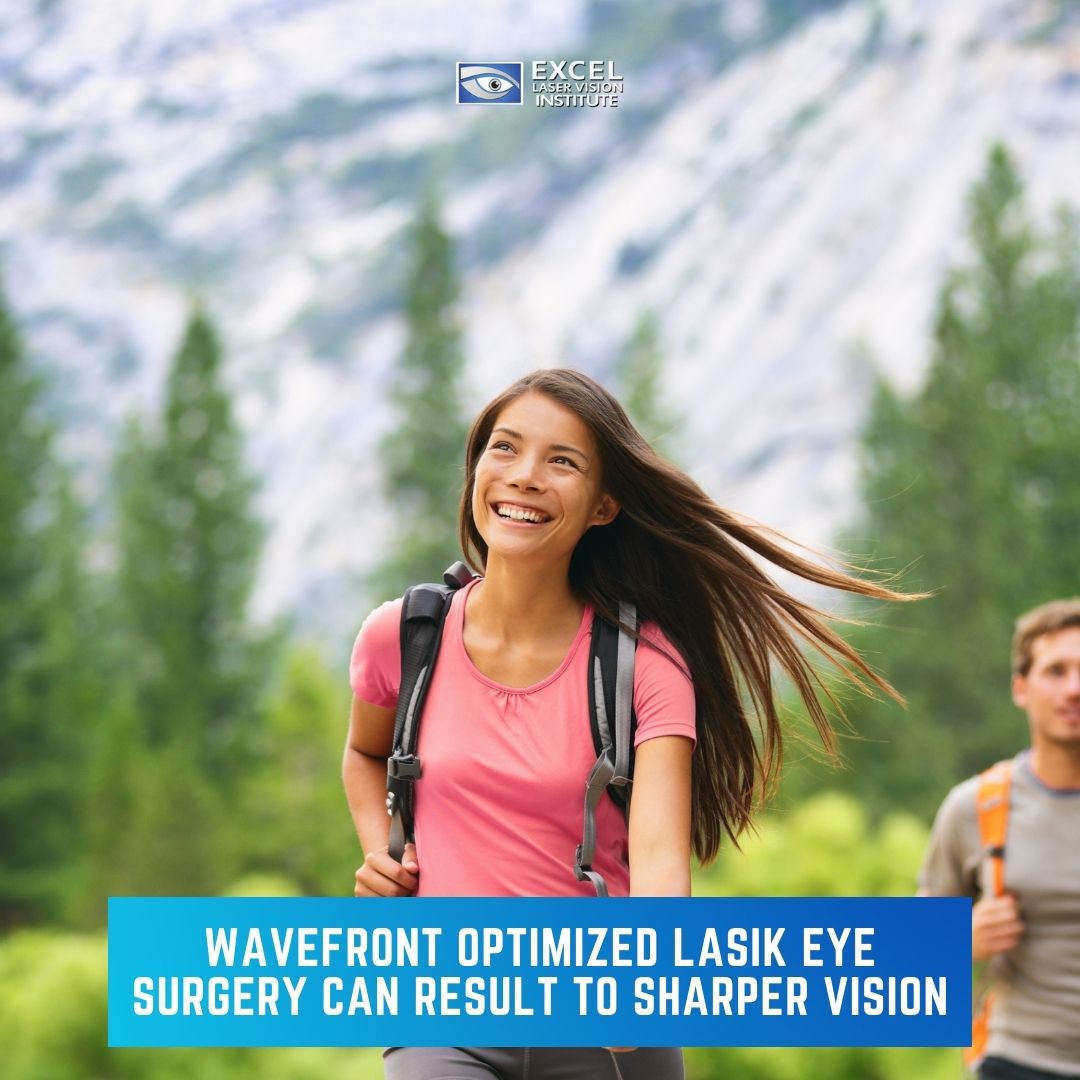
Wavefront Optimized LASIK Eye Surgery can Result in Sharper Vision
If you are a person who suffers from nearsightedness or farsightedness, you can correct your vision with a corrective eye surgery. Generally speaking, this outpatient LASIK eye surgery procedure utilizes a laser to change the shape of the patient’s cornea, enhancing the way the eyes focus light rays onto the retina. It’s a very sought-after laser vision correction procedure that has helped millions of people with eye issues worldwide.
Recently, LASIK has gone through modifications that massively improved its reliability. To get the sharpest vision after a LASIK Los Angeles procedure, think about having a Wavefront Optimized Laser Vision correction procedure. Wavefront Optimized Laser technology provides a more accurate and personalized evaluation of the one-of-the-kind characteristics of your eyes to achieve better results.
What is Custom Wavefront LASIK?
Some people who ask about LASIK eye surgery cost also want to know about custom wavefront LASIK, also known as LASIK or wavefront LASIK. Eye doctors tell us that custom LASIK or wavefront LASIK adds a significant level of precision and personalization to LASIK vision correction surgery by using advanced wavefront technology to assess the unique characteristics of a person’s eyes.
Although eyeglass prescriptions are not uncommon, millions, even billions, of people can have similar eyeglass prescriptions. Due to the unique characteristics of every person’s eyes that can’t be measured with traditional techniques used to ascertain refractive error during an eye exam, people who have the same eyeglasses prescription will see with various levels of clarity compared to individuals with the same prescription lenses.
On the other hand, custom LASIK uses more detailed information rather than just conventional eyeglasses prescription to program the excimer laser that reshapes the eye during the vision correction procedure.
The wavefront technology used for custom LASIK makes the procedure a cut above a conventional LASIK procedure in two ways:
Custom Wavefront LASIK is More Accurate
While your eye doctor gives you a routine eye exam, he or she will bring in various lenses in front of your eyes as you look at an eye chart and ask you which lens lets you see the letters clearer? Is it lens 1 or lens 2? Occasionally the lenses will look similar, and it’s difficult to select which one makes you see the chart clever. Perhaps it’s a lens in between the two?
Your eye doctor uses a dial instrument that requires them to click through to find out a person’s eyeglasses prescription using the smallest unit of power – 0.25 diopter (D). That’s why eyeglass prescriptions have numbers such as -1.25 D and -1.50 D, but not 1.3 D.
The power of lenses needed to correct a person’s vision is measured in 0.01 D units when it comes to wavefront LASIK. Essentially, during your eye exam, rather than your eye doctor giving you “lens 1” and “lens 2” to select from, you have twenty-four extra lenses in between these two to choose from.
Fortunately, choosing the lens that precisely corrects your vision for a custom LASIK procedure is carried out right away by a computer, rather than you making the decision.
When assessing the refractive errors within the eyes in 0.01 D increments (instead of 0.25 D increments, as in a routine eye exam), measurements used for custom wavefront LASIK are 25 times more accurate than lens powers used in an eyeglasses prescription.
Custom Wavefront LASIK is More Individual
When your eye doctor ascertains your eyeglass prescription during your eye exam, they determine your eye’s ability to focus light as a complete whole. One lens prescription is worked out for the whole eye.
Measurements collected for custom LASIK are accumulated from hundreds of separate reference points on the eye’s front surface. All these data points are used to produce a detailed map of refractive error and focusing imperfections known as higher-order aberrations throughout the entire cornea.
Afterward, this map is used to program the excimer laser to give a personalized vision correction for your particular requirements.
What are the Types of Custom LASIK?
There are three essential types of custom LASIK eye surgery procedures:
- Wavelength-Guided LASIK: This procedure involves detailed, wavefront-generated measurements based on how light waves travel through your eyes and fall on the retina, to produce a laser treatment that is entirely personalized for the eye anatomy and vision requirements. Besides, correcting nearsightedness, farsightedness, and astigmatism, wavefront-guided LASIK lowers irregular higher-order aberrations that can lessen visual clarity even after all significant refractive errors are corrected.
- Wavefront-Optimized LASIK: This procedure involves detailed measurements of the curvature of the eye’s front surface to maintain the natural aspheric shape of the cornea. Maintaining the cornea’s natural shape lowers the risk of a specific type of higher-order aberration known as spherical aberration, which can happen naturally in an eye or result from other types of laser vision correction procedures. Typically, spherical aberration is brought about by halos around lights and other night vision problems.
- Topography-Guided LASIK: This procedure involves detailed measurements of the cornea’s surface to program the laser to tackle vision issues caused by corneal irregularities (including corneal scars) besides refractive errors. Topography-guided LASIK is not a wavefront LASIK procedure, but it provides a more personalized vision correction than conventional LASIK.
Does Custom LASIK Provide Better Results than Traditional LASIK?
Custom LASIK delivers the most precise form of LASIK available today. Individuals who go through custom LASIK achieve more significant vision results, with a higher possibility of achieving 20/20 vision and better overall vision.
Who are the Ideal Candidates for Wavelength?
The main reasons why people choose to undergo LASIK is because they are fed up with wearing eyeglasses or contact lenses, for cosmetic reasons, for social or marriage, or for lifestyle activities that are inhibited by eyewear such as outdoor sports such as golf, football, water sports or hiking.
Some people don’t believe eyeglasses are attractive. Frequently, there is some level of distortion when looking through the periphery of the glasses, the field of vision is lowered, and sometimes when leaving a cold room, moisture can fog the glasses which can be unsuitable for particular careers such as the Army, Merchant Navy, Airlines, Air Force, Railways and professional sports.
On the other hand, contact lenses need a lot of attention to hygiene when inserting removing them since lack of hygiene can result in infections.
Wavefront LASIK gets rids of all these disadvantages. Wavefront-guided LASIK has made it possible to treat a larger spectrum of patients. This procedure especially helps people with eye issues to have a clear vision, which would have otherwise been difficult with the older procedures. Furthermore, those unhappy with any form of vision correction are candidates for Wavefront-guided customized treatments.
What are the Advantages of Wavefront-Guided LASIK Over Standard LASIK
Recently, studies have shown these advantages of wavefront-guided LASIK compared to traditional LASIK:
- 100% patient satisfaction with very few side effects or complications.
- 70% of these patients achieved one to two lines of visual acuity more than what was anticipated from this treatment before the procedure.
- 16% of wavefront-guided LASIK patients got a post-procedure uncorrected visual acuity of 6/3 [3 lines smaller than normal].
- Wavefront treatment results were found to bring stable, accurate post-operative results.
- The incidence of postoperative symptoms such as glare, halos, lessened contrast sensitivity, and poor night vision as with standard LASIK are overall absent or significantly reduced with wavefront treatments.
- Wavefront-guided treatment has applications in complicated post-refractive surgery (RK, PRK, LASIK) patients (with considerable symptoms, decentred treatments) as well as in patients professionally needing acute vision.
What are the Features of a Wavelength Laser?
The WaveLight is unsurpassable for wavefront procedures using the quickest and most sensitive eye tracker in the world [500 Hz] to ensure perfectly accurate and well-centered treatments.
This laser has the fastest treatment time, about [500 Hz], which is a vital factor in ensuring uniform treatment over the entire surface of the cornea by minimizing dehydration of the cornea and other external influences during the procedure. Plus, it manages to customize the corneal shape to improve visual acuity and improve contrast, especially in dim light conditions.
The highly advanced WaveLight laser utilizes a ‘Flying Spot’ of 0.9 mm, a requirement to provide accurate placement of laser treatment. This specific treatment leaves nothing to chance. Wavefront procedures very often leave patients with eyesight better than expected. As a matter of fact, some may say patients are left with super–vision or eagle vision.
At Excel Laser Vision Institute, LASIK surgery improves your vision. However, you should consult with the experts about which eye correction surgery is best for you. If you want to know more about LASIK surgery, please do not hesitate to call us at (866) 923-9235.

3 Preparation Tips for Best Results when Getting Laser Eye Surgery
An increasing number of people in southern California who experience vision problems are now turning to Orange County LASIK surgery to finally get the clear vision that they have always dreamed of. Although the actual procedure only takes up to 15 minutes, that doesn’t exempt you from needing to prepare for it. Here are the best steps you can take to prepare yourself for your operation, straight from our team to our valued patients:
Be Realistic. Understand What LASIK Can and Cannot Achieve
Familiarizing yourself with the entire process, from pre-surgery to aftercare, will make you feel more confident walking into your appointment. This particular type of laser eye surgery is designated to alter the shape of your cornea so that you can see more clearly, but it is not right for every patient. For instance, if you have excessively dry eyes or have a more serious and permanent vision impairment, the doctor can deny performing the procedure on you. In order to evaluate your candidacy, you will undergo a comprehensive eye examination, and the doctor will decide which strategy will be best for you.
Select a Highly-Skilled and Experienced Specialist
Selecting a LASIK surgeon who has extensive experience in his profession will ensure you get the best results for your money and your eye health. You want to choose somebody who knows exactly what they are doing, and you will be able to fully trust.
Plan Well Ahead of Time
While you can opt for LASIK surgery as long as you are at least 18 years old and have been approved by an ophthalmologist, a stable prescription lasting for a minimum of 2 years is required prior to your operation. Ask as many questions as possible during your consultation appointment, write them down and bring them to the office if it helps you remember all of them. If any new questions arise in between appointments, contact your doctor right away. Never wait until the last minute to ask important questions about your procedure.
Inform your employer in advance of your LASIK surgery so you may get a couple of days off from work. If you are still in school, you may want to consider scheduling your operation during a break so that you will not have to miss any of your classes. You should be prepared to feel discomfort following surgery, such as slight itching, burning, or watering. This is why you must plan to have somebody you trust drop you off and pick you up from the surgery ahead of time since you will not be allowed to drive.
Are You Ready to Change Your Life with LASIK?
Are you interested in LASIK but uncertain where exactly to start? If so, please reach out to our Brea office today to schedule your free consultation appointment! Our doctor can answer any questions you have, whether it be regarding your candidacy or the cost of laser eye surgery.


